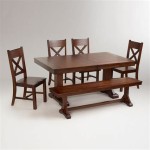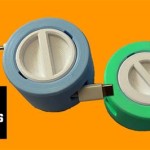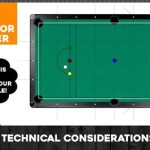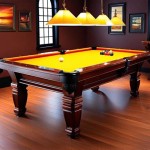Playing Space for Table Tennis: Optimizing Performance and Safety
Table tennis, a sport enjoyed by millions worldwide, demands precision, agility, and strategic thinking. While these attributes are essential for success, the physical environment in which the game is played is equally crucial. The available playing space significantly influences a player's ability to execute shots, move freely, and maintain safety. This article explores the critical dimensions and characteristics of an ideal playing area for table tennis, highlighting the reasons behind these requirements and their impact on gameplay.
Minimum Space Requirements: Standard Dimensions and Rationale
The International Table Tennis Federation (ITTF), the governing body for the sport, stipulates minimum dimensions for competition playing areas. These guidelines aim to provide players with sufficient room to move and react to the fast-paced nature of the game. While casual play might occur in smaller spaces, adherence to these standards ensures fair and safe competition.
The ITTF recommends a playing area of at least 14 meters in length, 7 meters in width, and 5 meters in height. These dimensions are not arbitrary. The length allows players ample space to move backward to retrieve deep shots, particularly during defensive play. The width accommodates lateral movement, crucial for covering the table and executing forehand and backhand attacks from various angles. The height is essential to prevent interference from low-hanging objects or ceilings, ensuring unobstructed ball trajectories, especially during serves and lobs.
It's important to note that these are *minimum* requirements. Professional tournaments and high-level competitions often utilize larger playing areas to further enhance player movement and provide even greater freedom of play. Inadequate space can restrict a player's ability to fully extend their reach, forcing them to compromise on shot quality or even leading to collisions with surrounding objects or other players.
Furthermore, the dimensions extend beyond the immediate perimeter of the table. Consideration must be given to the area behind the players, allowing enough room for backpedaling and defensive strategies. Similarly, sufficient space on either side of the table enables efficient lateral movement for covering different angles and executing powerful shots. Without this surrounding space, players are severely limited in their tactical options and overall performance.
Consider the impact on a player attempting a deep forehand loop when forced to stand too close to a wall. The player may be unable to fully extend their arm, leading to a weaker, less effective shot. Conversely, a player defending a powerful smash from a position too close to the back wall may be unable to retreat sufficiently for a proper return. Consequently, adhering to or exceeding the minimum space requirements is paramount for maximizing player performance and tactical versatility.
Surface Characteristics and Lighting: Enhancing Visibility and Safety
The playing surface itself, while not directly impacting the overall dimensions, is another critical factor in creating an optimal playing environment. The floor should be level, non-slippery, and provide adequate traction to facilitate quick movements and prevent injuries. Uneven surfaces can lead to missteps and imbalances, negatively affecting a player's stability and accuracy. Slippery surfaces increase the risk of falls, while surfaces with insufficient traction can hinder rapid changes in direction.
The ideal flooring material for a table tennis playing area is often a sprung floor or a specialized sports floor designed for indoor activities. These surfaces offer a degree of cushioning, reducing the impact on players' joints and minimizing fatigue during prolonged play. They also provide excellent traction, enabling players to maintain their balance and execute swift movements with confidence. Concrete floors are generally not recommended due to their hardness and lack of shock absorption, which can contribute to injuries over time. Carpeted surfaces, while providing cushioning, can sometimes hinder smooth movement due to excessive friction.
Adequate and uniform lighting is equally important for ensuring optimal visibility and preventing eye strain. Light sources should be positioned strategically to minimize glare and shadows on the table surface. Glare can distract players and make it difficult to track the ball's trajectory accurately, while shadows can obscure the ball's position, leading to misjudgments and incorrect shot execution.
Ideally, the lighting system should provide a consistent and bright illumination across the entire playing area, particularly above the table. Fluorescent lights or LED fixtures are commonly used, offering energy efficiency and consistent light output. The light fixtures should be positioned high enough to avoid obstructing the ball's path, and diffusers can be used to soften the light and reduce glare. The recommended light level is typically between 500 and 1000 lux, measured at the table surface. Inadequate lighting can lead to eye strain, reduced reaction time, and an increased risk of errors.
The color of the walls and surrounding surfaces can also impact visibility. Dark colors can absorb light, making the playing area feel dimmer. Conversely, excessively bright or reflective surfaces can create glare. A neutral color palette, such as light gray or beige, is generally recommended to provide a balanced and comfortable visual environment.
Furthermore, the absence of distractions in the player's line of sight is crucial. Cluttered backgrounds, bright or flashing lights, and moving objects can divert attention and negatively impact focus. A clean and uncluttered environment helps players maintain concentration and execute their shots with precision.
Safety Considerations: Preventing Injuries and Ensuring Player Well-being
Beyond performance enhancement, the playing space must prioritize player safety. Accidents can occur during fast-paced rallies or when players are moving quickly to retrieve the ball. Ensuring adequate space and implementing safety measures can significantly reduce the risk of injuries.
The absence of obstacles within the playing area is paramount. Walls, furniture, and other objects should be located far enough away from the table to prevent collisions. Padding can be added to walls or other potential hazards to minimize the impact of accidental contact. Clear walkways should be established to allow players to move freely around the table without tripping or bumping into objects.
The surface of the playing area should be regularly inspected for hazards such as cracks, loose tiles, or uneven sections. These defects can create tripping hazards and increase the risk of falls. Any damage should be repaired promptly to maintain a safe playing environment.
Proper ventilation is also essential for maintaining a comfortable and healthy playing environment. Adequate airflow helps to regulate temperature, reduce humidity, and prevent the buildup of stale air. Poor ventilation can lead to overheating, fatigue, and discomfort, negatively impacting player performance and potentially increasing the risk of heat-related illnesses.
First-aid equipment should be readily available in case of injuries. A well-stocked first-aid kit, including bandages, antiseptic wipes, and pain relievers, should be easily accessible. Designated personnel should be trained in basic first-aid procedures to provide immediate assistance in the event of an emergency.
Consideration should also be given to the proximity of spectators. If spectators are present, a safe distance should be maintained between the playing area and the audience to prevent interference or accidental contact. Barriers or netting can be used to delineate the playing area and protect spectators from stray balls.
Finally, players should be encouraged to wear appropriate footwear with non-slip soles to provide adequate traction and minimize the risk of slips and falls. Warm-up exercises should be performed before play to prepare the muscles and joints for the physical demands of the game, reducing the risk of strains and sprains.
By adhering to these safety considerations, table tennis facilities can create a secure and enjoyable environment for players of all skill levels, fostering participation and promoting the long-term health and well-being of athletes.

Room Size For Table Tennis Playeronsite

Table Tennis Room Size Home Space Guide Racket Insight

Table Tennis Buyer S Guide Liberty

How Much Space Do You Need For A Table Tennis Heemskerk Play It

Table Tennis Room Size Court And Dimensions

Table Layouts For Tennis Club

Table Tennis Standard Dimensions Free Dwg Layakarchitect

Table Tennis Room Size Home Space Guide Racket Insight

Room Size For Table Tennis Playeronsite

How Much Space Do You Need For A Table Tennis Heemskerk Play It








